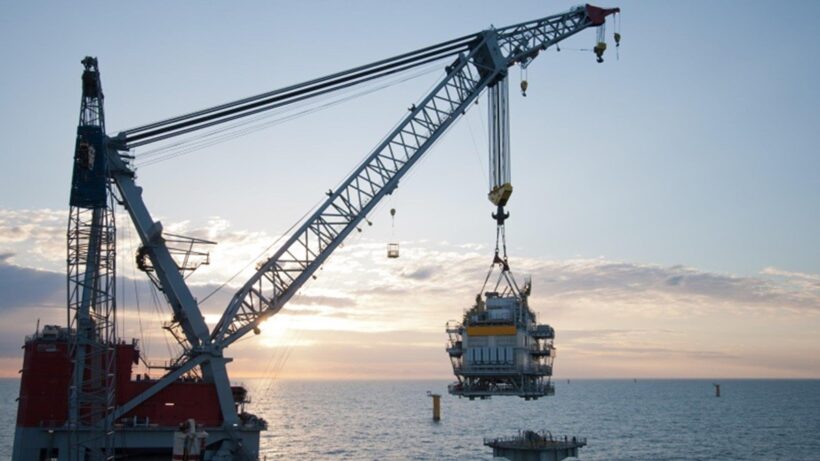Managing any large-scale lifting project means ensuring you have the right tools for the job. In order for your project to be successful, you also need to factor in the safety needs of your team. Lifting projects can be hazardous. You’re working with machinery such as cranes to lift and move heavy loads. This in itself poses potential risks for both the operator and the team on the ground.
Having some of the most basic lifting tools keeps your project running smoothly and safely. A block and tackle system is one example of a lifting mechanism required to hoist heavy loads. But there are other tools which will keep your lifting project running without a hitch.
Read on to find out six of the basic tools every lifting project should have so the job is done efficiently, safely and professionally.
1. Chain Blocks
The chain block, also known as a block and tackle or a hand chain hoist, is a basic lifting tool useful for many purposes. They’re made up of two hooks and chain. Chain blocks are attached to either a beam or travelling trolley depending on the job type. They can handle capacities ranging from 250kg to 50 000kg.
Chain blocks are designed to handle a range of lifting jobs from medium to heavy duty. A chain block and tackle is used in many industries for lifting projects. The mining and construction projects as well as the entertainment industry all make use of chain blocks for lifting and moving heavy loads.
2. Rope Slings
Rope slings are used for heavy lifting jobs. It’s most often attached to a crane. The purpose of the rope sling is to attach the object being lifted to the crane so it can be lifted and moved safely. They’re commonly made with wire rope.
This useful rigging hardware is used in many different industries when heavy loads need to be lifted. You’ll find them being used in shipyards as well as on mining and construction sites.
3. Eyebolts
A successful lifting job would not be possible without high-quality eyebolts. These useful lifting accessories are used to attach an eye to a structure so rope or chain can be fed through it. They’re designed to have an eye at one end and a threaded shank. This simple but highly effective piece of rigging equipment is useful for both vertical and angular lifting.
A durable and safe eyebolt should be made with carbon, stainless or alloy steel. These materials prevent the accessory from rusting and gives them better lifting capacity.
4. Spreader Beams
A spreader beam is designed to handle a lot of weight despite its own size. It’s a simple piece of equipment made up of a bar that holds two slings apart. While simple in design, it’s able to convert heavy lifting loads into pure compressive force. Lifting lugs on either side of the top of the bar are attached to the sling. This allows for even distribution of the load’s weight when it’s attached to the crane.
The spreader beam is extremely useful when very wide or very heavy loads need to be hoisted.
5. Lifting Beams
While the lifting beam is often confused with the spreader beam, it’s used for different lifting jobs. It’s also comprised of a single bar but with one attachment point centered at the top of the beam. This is attached to the crane or whichever lifting machinery is being used. The underside of the beam has two or more lugs for attaching the load being lifted.
The design of this beam type is best suited for jobs with lighter and short span lifts. They’re perfect for lifting objects that are too pliable for lifting without support.
6. Vacuum Lifting Devices
Vacuum devices are used in lifting operations that require gripping large capacity parts. They work on the principle of using suction cups to support the load. The vacuum device is attached to the crane and can be used to lift concrete slabs, glass, metal sheets and more. They’re often used for more fragile loads.
The advantage of using a vacuum lifting device is it offers more precision than the conventional sling or hoist methods. They also save on labour in that only the operator of the device is required to attach and lift loads.
Final Thoughts
Managing any heavy duty project is hard work. Ensuring you have all the right tools and equipment goes a long way to ensuring all goes well. Some of the most basic tools used in lifting projects are often ignored or not used correctly. But keeping them on your inventory list means you have all the right equipment for different applications.
Safety regulations also require you to have the right lifting equipment and accessories when performing a lifting project. And the basic tools mentioned above fall into the categories stipulated for safe handling and operations of heavy loads.
Make sure you and your team are covered whenever you start a lifting project and get the most basic but essential tools in to do the job.
Laila Azzahra is a professional writer and blogger that loves to write about technology, business, entertainment, science, and health.
